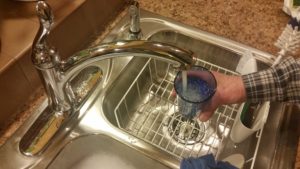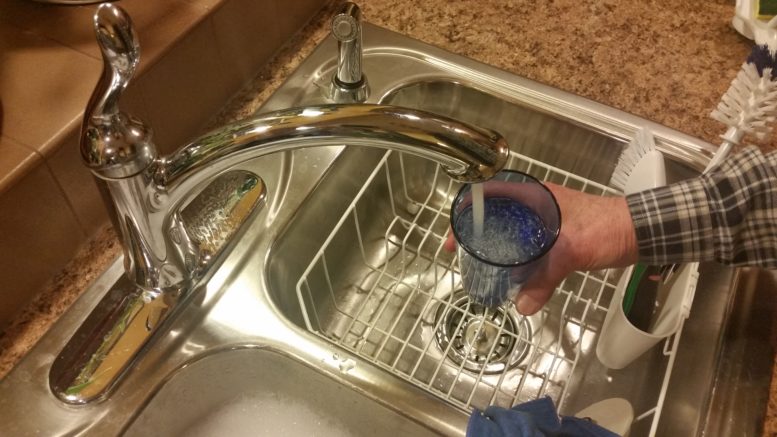By JAN LARSON McLAUGHLIN
BG Independent News
Flint residents will likely be suspicious for years to come about the water that comes out of their taps. Many continued drinking the discolored water after being reassured by authorities that it was safe for consumption.
The crisis that will reverberate for years in Michigan has some Ohio residents wondering about the safety of their tap water.
Any lead pipes used in Bowling Green city’s water delivery system have long ago been replaced, according to city officials. But the city has no control over the pipes used to tap into the lines and carry water into individual homes.
“As far as our records go, we’re not aware of any lead service lines that are a part of the system,” said Brian O’Connell, director of public utilities for Bowling Green. In the early 1990s, the lead lines were replaced with copper lines, according to Mike Johnson, of the water division.
But homeowners are responsible for that bit of pipe that brings the water from the street lines into their faucets.
“We don’t always know what is in the house,” O’Connell said.
Since some residents may unknowingly have lead lines in their homes, the Environmental Protection Agency has had the city test about 30 water samples each year from residences that may have older connections to the city waterlines. In the past several years, only a handful of homes have shown any detectable levels of lead, Johnson said. All the others have tested as “no detect” for any lead.
Unlike Flint, Bowling Green uses anti-corrosive chemicals which deposit on the walls of the pipe and make it less likely the water will cause the pipe to deteriorate, noted Joe Fawcett, assistant municipal administrator.
Local residents with concerns about possible lead in their drinking water can have it tested by the Wood County Health District. The tests can be done one of two ways, according to Pat Snyder, communications manager at the health district. The resident can pick up a bottle provided by a lab, get a sample of their water, then return it to the health district. That test costs $17.80. The health district can also send out a sanitarian to take the water sample for $63.
Anyone interested, or who has questions may call the Environmental Health Division office at 419-354-2702.
The risks of lead in water can be significant and long-lasting, according to health district officials.
“High levels of lead in the drinking water can cause adverse health effects if the lead in the water enters the bloodstream which results in elevated blood lead levels,” said Amy Jones, director of nursing at the health district. “Especially vulnerable to the effects of lead exposure are children and pregnant women.”
Two bills are currently being considered by state legislators in Ohio in an attempt to reduce the risks of lead in drinking water. The bills take such steps as require regular testing of drinking water for lead, set standards for pipes used in water systems, and require timely notice to residents of unsafe lead levels found in their water.


